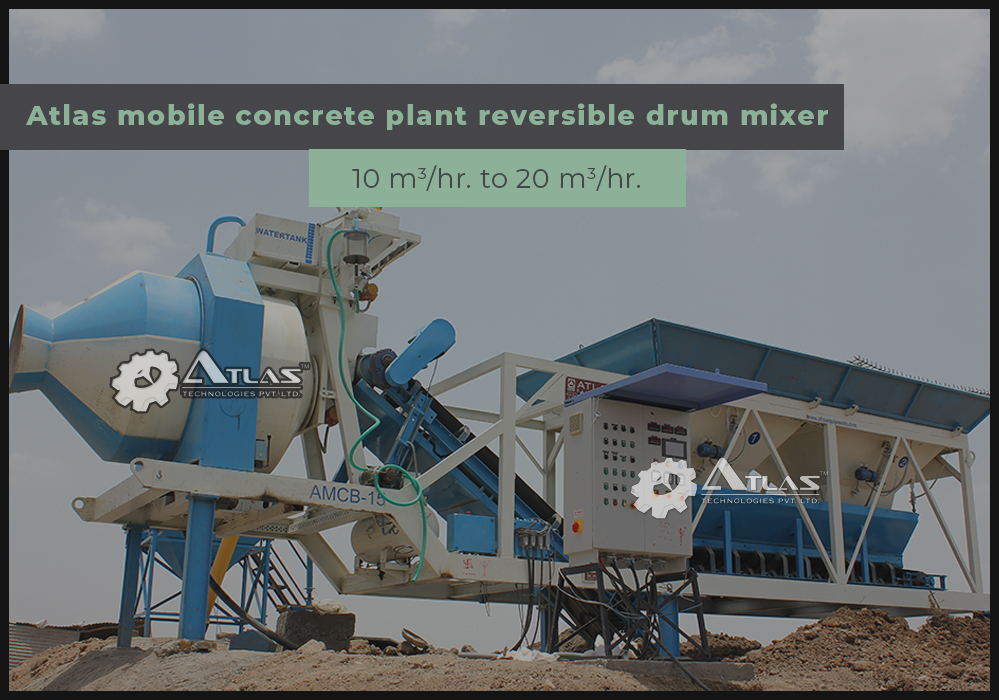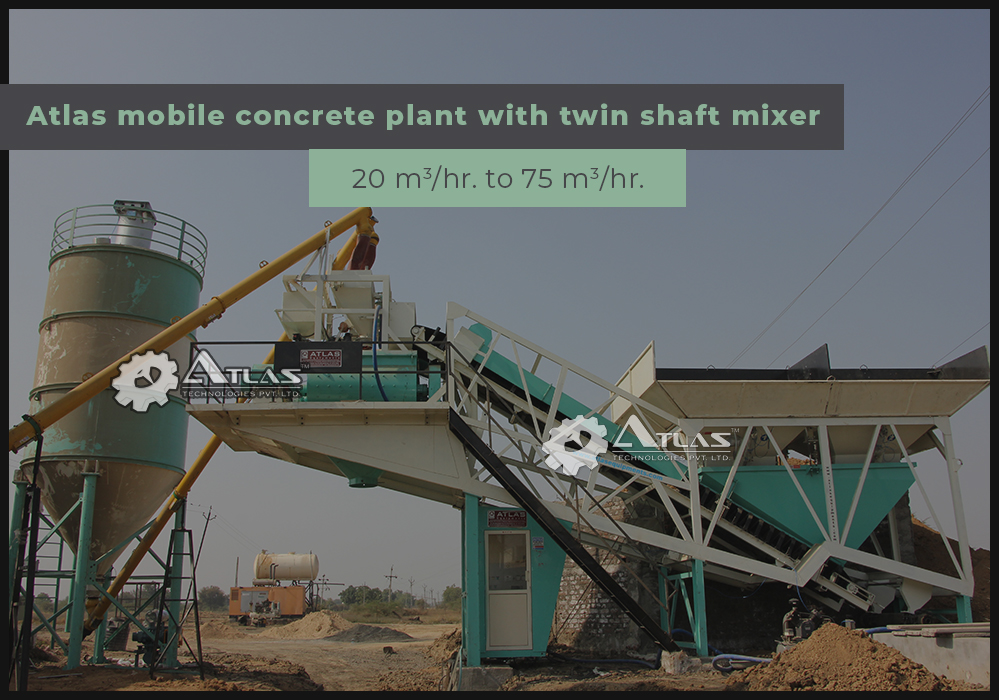At Atlas Technologies India, we manufacture mobile concrete mixers of varying capacities. As of today, the company is one of India’s key exporters of portable concrete mixers of capacities between 10m3/hour and 75 m3/hour. At Atlas, these machines are engineered in two designs. The key point of difference between them is the mixing unit. The two uses two different concrete making equipment and that’s what makes the machines essentially different. Also the basic structure is different making the two machine look different from each other.
Concrete batch plants of the mobile / portable kind are available at Atlas Technologies India in four different capacities namely, 10 cum, 15 cum, 20 cum and 25 cum an hour. Those with capacities of 20 m3, 30 m3, 45 m3, 60 m3 and 75 m3/hr. are available in the twin shaft mixer design. Both these are batch mixing, portable and use different types of weighing mechanisms for aggregates, water and other additives.

Compare the two basic types of portable concrete plants with a sharp focus on their mixer types.
The two basic types of portable concrete plants with different mixer types are designed keeping in mind our wide customer base. Different customers have different requirements and the different designs are to cater to their requirements.
When we talk about the cold feed devices, the twin shaft and reversible mixer plants both feature 2×2 bin feeders and both have two individual vibrators present in the separate bins. In both the plants, aggregates are loaded with the help of loaders.
The loading height of the reversible drum type portable concrete batch plant kind is relatively lower as opposed to other kinds of concrete plants. By comparison, the twin shaft mixer plant uses a single conveyor which is responsible for both weighing and transferring of aggregates. This is different in mobile mix plants where the weighing is done in a separate conveyor and transfer is done by another.

Among the things in common in the plants is the air compression. Used for pneumatic functions, these compressors are present on the feeder chassis in both the models. Water is measured in the water storage hopper and is sucked into the weighing hopper with the help of a water pump. Reversible drum mixer plants discharge the water inside with a pump whereas the twin shaft mixer model does the same with the use of a butterfly valve.
Twin shaft mixer plants use a grease pump for the functions of lubrication which is manually operated whereas reversible drum plants use an integrated lubrication system that works especially for the mixing drum.
The HMI panel is located inside a foldable cabin in the twin shaft model and inside a regular compartment in the reversible drum model.
In both the plants, it is possible to unload the concrete directly into the transit mixer or what is called the concrete pump. For a twin shaft mixer, the height is 3.7 meters and for a reversible drum mixer, it is slightly lower, 1.9 meter.
The plants share the same height. Both stand at 11.58 meters and come prewired.
The twin shaft mixer uses a single axle whereas the reversible drum uses twin axles.
Both the machine have their different purpose and different customer base through which they cater to. They are both mobile and easily towable. This allows our customers to have multiple options and choose the best possible machine for their requirement. Contact us to know more about how we can help you.
